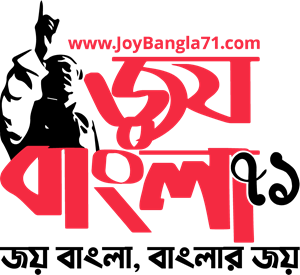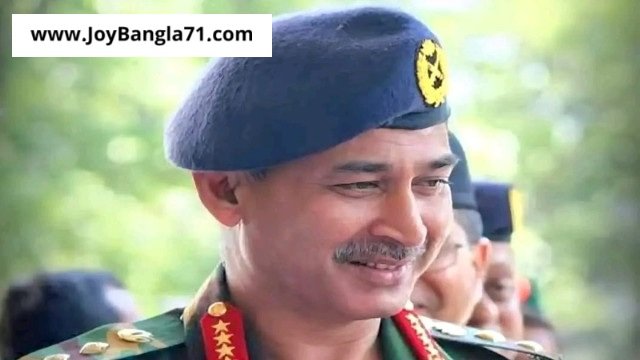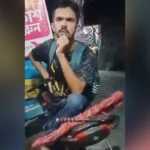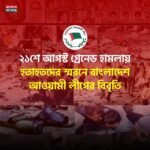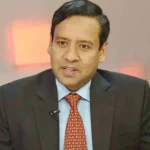ছাত্রসমাজ: যে শক্তি জাগালো দেশকে
জুলাই বিপ্লবের নেতৃত্ব মূলত ছাত্ররাই দেয়। পরে সমাজের অন্যান্য অংশ যোগ দেয় যা মহানগর পেরিয়ে দেশব্যাপী ছড়িয়ে পড়ে। কোটা-বিরোধী আন্দোলন দিয়ে শুরু হলেও ধীরে ধীরে তা ভেতরে জমে থাকা শ্রেণীচেতনা, সম্পদের বৈষম্য ও ‘রাজনৈতিক শ্রেণি’র অসংবেদনশীলতায় তীব্রভাবে ফেটে পড়ে। আন্দোলন ছিল অহিংস এবং নেতৃত্বহীন। পরবর্তীতে ছাত্রলীগ ক্যাডার-পুলিশ-সেনার হস্তক্ষেপে তা সহিংস রূপ ধারণ করে। আজ এতদিন পর সেই বিপ্লবী চেতনা পুরোনো রাজনৈতিক কাঠামোতে ছাত্রদের ঢুকে যাওয়ার কারণে ক্ষয়ে যেতে শুরু করেছে। ফলে একটি বিপ্লবী শক্তি হিসাবে ভবিষ্যৎ স্বৈরতন্ত্র ঠেকানোর জন্য, দেশ, সরকার ও রাজনৈতিক দলসমূহের ওপর তাদের যে “ওয়াচডগ” ভূমিকা পালন করার কথা ছিল, তা না করে তারা নিজেদের প্রাধান্য বিসর্জন দিয়ে অন্যান্য রাজনৈতিক দলের কাতারে নেমে এসেছে।
এখন যেহেতু তারা দল করেছে তাদের সম্ভাবনা ও সংস্কার বাস্তবায়নের সক্ষমতা বিচার করা যাক। নুরুল হক নূর (কোটা আন্দোলন) ও জোনায়েদ সাকি (যৌন নিপীড়নবিরোধী আন্দোলন)-এর মতো নেতা পরে ‘গণঅধিকার পরিষদ’ ও ‘মাস সলিডারিটি মুভমেন্ট’ গড়েন। কিন্তু বর্তমানে এ দলগুলো রাজনৈতিক দৃশ্যপটে এতটাই অগুরুত্বপূর্ণ হয়ে উঠেছে যে এগুলোর অস্তিত্ব ও কর্মকাণ্ড শুধুমাত্র জোট গঠনের মধ্যেই সীমাবদ্ধ হয়ে পড়েছে। ন্যাশনাল সিটিজেন পার্টিরও কি একই পরিণতি হবে? বলা মুশকিল—তবে তাদেরকে বিএনপি ও আওয়ামী লীগের চেয়েও আকর্ষণীয় কিছু প্রস্তাবনা সমাজকে দিতে হবে। বিএনপি ও আওয়ামী লীগের জনপ্রিয়তা যথাক্রমে জিয়াউর রহমান ও শেখ মুজিবের ভাবমূর্তির ওপর নির্ভরশীল। ‘ধানের শীষ’ এবং ‘নৌকা’ প্রতীকের মাধ্যমে তারা ভোটারদেরকে টানে। কিন্তু বাংলাদেশের ভবিষ্যতের বহু চ্যালেঞ্জে তাদের কল্পনাশক্তি সীমিত। ‘জাতির পিতা’ ও ‘স্বাধীনতার ঘোষক’ বিতর্কে এ দল দুটোর সময় কেটে যায়। আওয়ামী লীগ স্বল্পোন্নত দেশ থেকে বাংলাদেশকে মধ্যম-আয়ের দেশে উত্তরণের প্রতিশ্রুতি দিয়েছে। অন্যদিকে বিএনপির দিকনির্দেশনা অস্পষ্ট ৩১ দফায় সীমাবদ্ধ। ছাত্ররা কি দেশের সামনে আরও আকর্ষণীয় পথনকশা দিতে পারবে?
প্রস্তাবনা দেওয়ার আগে দল করার কারণ স্পষ্ট করতে হবে। সেটি কি বিএনপির সাথে প্রতিদ্বন্দ্বিতা করার জন্য? আওয়ামী লীগের ছেড়ে যাওয়া শূন্যতাকে পূরণ করার জন্য ? নাকি চাওয়া সংস্কারগুলো বাস্তবায়ন করার জন্য, যা বিদ্যমান কাঠামোয় না ঢুকলে সম্ভব নয়? অথবা, এর কারণ কি ছাত্রগোষ্ঠীগুলোর মধ্যে ঐক্য সাধনের জন্য? বিএনপির প্রাধান্যের পাল্টা ভারসাম্য তৈরীর জন্য? নাকি, আওয়ামী প্রত্যাবর্তনে নিপীড়ন এড়ানোর জন্য?
দলের মতাদর্শ ও অবস্থান জানানো জরুরি। এটি কি মধ্যপন্থী দল? নীতি-প্রভাবিত দল? ডান দল? না বাম দল? জাতীয়তা, জাতির পিতা, স্বাধীনতার ঘোষণা, বংশতন্ত্র—এসব মূল প্রশ্নে তাদের অবস্থান কী?
সবশেষে—ইশতেহার, পরিকল্পনা ও বাস্তবায়ন গুরুত্বপূর্ণ। এগুলো স্পষ্ট না হলে দলের উদ্দেশ্য ও সক্ষমতা নিয়ে জনগণের সংশয় কাটবে না। জাতীয় ভিশন তৈরি কঠিন। ভিশনে দীর্ঘ ও মধ্যমেয়াদি লক্ষ্য, কৌশল ও বাস্তবায়নের ভিত্তি স্পষ্ট করে বলতে হবে। শেখ মুজিবের ছয় দফা, জিয়ার উনিশ দফা/সবুজ বিপ্লব অথবা জামায়াতে ইসলামের ইসলামিক শাসনের মতো তা জাতির হৃদয়ে পৌঁছাতে হবে। তা না হলে প্রথমেই ধাক্কা খেতে হবে। ভিশনে গণমানুষের আকাঙ্ক্ষা ফুটতে হবে। আওয়ামী লীগের ‘মুক্তিযুদ্ধের চেতনা’, বিএনপির ‘বাংলাদেশি জাতীয়তাবাদ’ অথবা জামায়াতে ইসলামের প্রতিশ্রুত ইসলামিক শাসনব্যবস্থার সাথে প্রতিযোগী হয়ে উঠতে হবে। গণতন্ত্র, সামাজিক সমতা, অর্থনৈতিক মুক্তি, ধর্মীয় স্বাধীনতা—এসবের বাস্তবায়ন-রূপরেখা থাকতে হবে।
বাংলাদেশ জ্ঞানভিত্তিক সমাজ নয়। ভিশন হতে হবে সহজবোধ্য। গ্রহণযোগ্য করতে সব শ্রেণির মানুষের সাথে মিশতে হবে।
সাংগঠনিকভাবে শুধু ছাত্রদের মধ্যে সীমাবদ্ধ না রেখে বৃহত্তর সমাজকে যুক্ত করতে হবে। ‘শিশুদের দল’ তকমা এড়াতে প্রবীণদের সক্রিয়ভাবে যুক্ত করতে হবে। তাদের অভিজ্ঞতা দলকে পোক্ত করবে। আমাদের সমাজে প্রবীণরা নেতৃত্ব দেয় এবং তরুণরা তাদের অনুসারী হয়।তাই বিভিন্ন প্রজন্মের মধ্যে চিন্তা-চেতনার সেতু বন্ধন প্রয়োজন।
কেউ কেউ ভাবতে পারে—বিপ্লবে আমরা নেতৃত্ব দিয়েছি, তাই নেতৃত্ব আমাদের প্রাপ্য। এটি বিপর্যয় ডেকে আনবে। প্রথম মেয়াদে ছাত্ররা ব্যাকস্টেজে থেকে প্রবীণদেরকে পথ দেখাবার সুযোগ করে দিতে হবে। পরের মেয়াদে তাদের প্রদর্শিত পথে অগ্রসর হতে হবে। আগামী নির্বাচনে ছাত্রপ্রার্থী ১০%-এর বেশি না হওয়াই ভালো।
দলের প্রথম বছরগুলোতে—শিক্ষিত, সম্মানিত, সৎ, সুস্বাস্থ্যসম্পন্ন, গতিশীল প্রবীণ রাজনীতিজ্ঞানসম্পন্ন ব্যক্তিরা ছাত্রদের ‘অ্যাপ্রেন্টিস’ হিসেবে প্রশিক্ষণ দেবেন। এতে দল শক্ত ভিত পাবে, উদাহরণও সৃষ্টি হবে।
আগামী নির্বাচনে নামা ন্যাশনাল সিটিজেন পার্টির জন্য অত্যন্ত কঠিন। উপজেলা-ইউনিয়ন পর্যন্ত তারা হয়তো কমিটি দিয়ে পৌঁছতে পারবে, তবে কাঙ্ক্ষিত ফল নাও আসতে পারে। তাই এখন সময় দিতে হবে—ভিশন জানানোর জন্য, মানুষের সাথে কথা বলার জন্য এবং তাদের হৃদয়ে পৌঁছানোর জন্য। স্কুল-কলেজ-বিশ্ববিদ্যালয়ের ছাত্র-ছাত্রীরা মাঠে নামলে ফলাফল ততটা হতাশাব্যঞ্জক নাও হতে পারে।
নির্বাচনের পরবর্তী পরিস্থিতিতে তাদের করণীয় ছাত্রদেরকে আগেই ঠিক করে রাখতে হবে। কী হবে যদি তারা একটিও সিট না পায়, কয়েকটি পায় অথবা প্রধান বিরোধী দল হিসেবে আত্মপ্রকাশ করে? জামায়াতে ইসলামী অথবা অন্যান্য রাজনৈতিক দলের সাথে তাদের সম্পর্কই বা কী হবে? যদি নতুন শাসক দল কার্যকরভাবে শাসন করতে ব্যর্থ হয় অথবা ভারতের সাথে জাতীয় স্বার্থ-পরিপন্থী চুক্তি বাস্তবায়ন করে তবে তারা কী করবে? আওয়ামী লীগ প্রত্যাবর্তন করলে তাদের ভূমিকা কী হবে? তারা কি তখনও একতাবদ্ধ থাকবে? প্রশ্নগুলো জটিল; কিন্তু উত্তর খোঁজা জরুরি।
চলবে ………………
Where are we headed in the next five years?
Sixth Part
We must also consider the student groups that led the revolution. They spearheaded the uprising, which was joined by other segments of society and spread throughout major cities. Bangladesh exploited this gift. Initially, it was a protest against job quotas, but underlying issues surfaced: social inequality, the growing wealth gap, and insensitivity of the ‘political class’.
The movement began peacefully, led by a leaderless group, but descended into violence after the Awami Student League’s goons, police, and military intervened. After all these days, their revolutionary spirit seems to be fading due to their misguided slide into the old-fashioned political structure. Instead of maintaining vigilance over political parties and governments as a revolutionary force, they unwittingly entered politics, giving up their watchdog role that would have prevented future authoritarian rule.
Now that they’ve formed a political party, let’s assess their potential and the extent of reforms they aim to implement in society. Student leaders like Nurul Haque Nur and Jonayed Saki gained prominence through the quota reform and anti-sexual harassment movements, respectively. Later, they launched their own parties, the ‘Bangladesh Gono Odhikar Porishod’ and the ‘Mass Solidarity Movement’, but they’ve since become insignificant in Bangladesh’s political landscape, forming only alliances. Will National Citizen’s Party face the same fate? It’s too early to say, but they must offer something more appealing than BNP and Awami League. The popularity of these two major parties stems from the personality cults of Ziaur Rahman and Sheikh Mujib, with symbols like the ‘sheaf of paddy’ and ‘boat’ influencing voters. However, they have limitations in envisioning Bangladesh’s future due to its numerous challenges. They spend much time debating the nation’s father and independence declaration. Awami League aims to promote Bangladesh from a LDC to a mid-income country, while BNP’s vision is confined to a not-so-well-articulated 31-point program. Can students provide a more appealing vision to their countrymen?
Before outlining their vision, students must clearly state their reasons for forming a political party. Are they seeking to compete with the BNP, capitalising on the political vacuum left by the Awami League’s departure? Or are they driven by the desire to implement reforms they initially cherished but found challenging without merging into the existing system? Perhaps they aim to unite student groups or create a counterweight to BNP’s dominance. Or are they concerned about surviving persecution if the Awami League returns to power?
The party’s ideology and political stance are crucial. Will it be centrist, ideologically driven, right-wing, or left-wing? Additionally, its views on core national issues like nationalism, the founding father, the declaration of independence, and dynasty-based rule are essential.
Lastly, the party’s manifesto and implementation plan are vital. Until these aspects are clearly communicated, people will have serious misgivings about the party’s true intentions and viability.
Formulating a national vision is a difficult task. It involves articulating long-term and mid-term goals and the basis for developing strategies and implementation plans. Until a vision resonates with the nation, like Sheikh Mujib’s six-point program or Ziaur Rahman’s 19-point program/green revolution, or for that matter Jamaat’s pledge for Islamic democracy and welfare, the party proposing it faces political setbacks. The vision should reflect the common people’s desires. Properly prepared, it should compete with the Awami League’s ‘spirit of the Liberation War’, BNP’s ‘Bangladeshi nationalism’ and Jamaat’s Islamism. While democracy, social equality, economic emancipation, and religious freedom remain core values, the vision must articulate the party’s plans to address them.
Students must remember that Bangladesh is not a knowledge-based society, so the vision must be understandable to the common people. To effectively sell this vision, the party must engage with people from all walks of life.
The organisation must address its narrow base by uniting a larger portion of society. To avoid being labelled as a ‘Children’s Party’, the party should actively engage with the elderly, drawing from their experiences to strengthen itself. Our society often sees the elderly as leaders and children as followers, so a blend of young and elderly people in the party would demonstrate its commitment to connecting different generations.
Some students may feel entitled to leadership roles due to their perceived role in the revolution, which could lead to disaster. Instead, students should remain in the background during the first term, allowing elders to set the trail for them. They should then follow closely in subsequent terms. The next election should not see students in more than 10% of the total candidature.
The party needs well-educated, respected, honest, healthy, and dynamic elders with political acumen to guide it in the initial years and train students as apprentices. This transfer of political education would strengthen the party and serve as an example.
Participating in the next election will be challenging. Forming committees down to upazila and union levels can extend their reach, but it may not lead to the desired outcome. Students must invest time and energy in articulating their vision, communicating with the public, and connecting with their hearts. The upazila and union committees have a valuable asset: the student body, which they can mobilise to motivate their parents and uncles in favour of the new party and its ideals. If the students from the schools, colleges and universities take part in the election campaign, the results may not be as dire as anticipated.
Students should consider the ‘aftermath of the election’ in their calculations. What would they do if they secure no seats, only a few, or become the major opposition party? What would their relationship with Jamaat, and other parties be? What if BNP fails to govern effectively and concedes to India’s demands detrimental to national interests? How would they respond if Awami League resurfaces? Will they remain united? These are questions to ponder.
To be continued ………………………..
